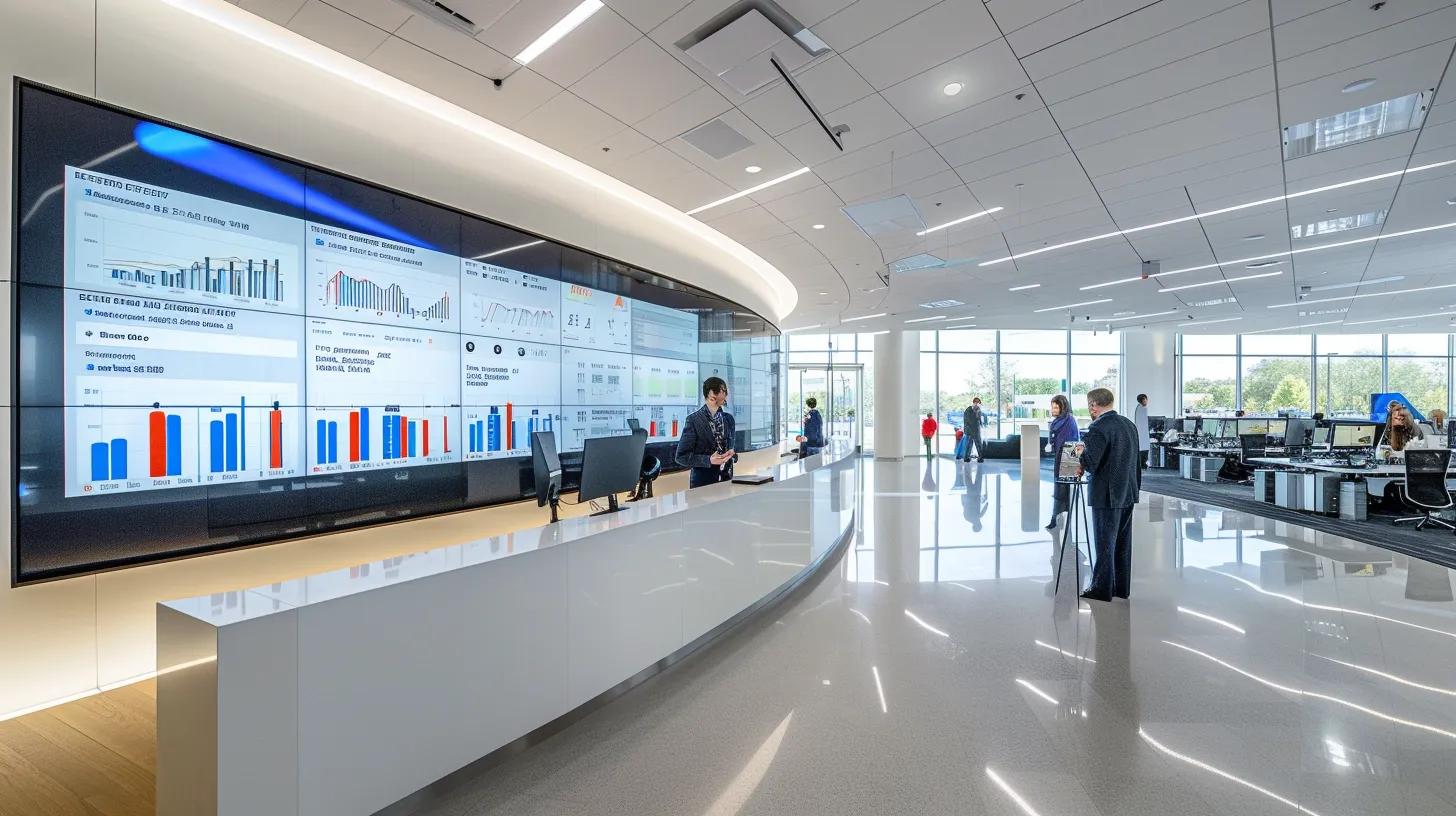
Table Of Contents:
- 10 Cloud Storage Permissions – Securing Your Digital Legacy with DocuGuardian
- 1. Bucket Permissions – Controlling Your Primary Storage Containers
- 2. Folder Permissions – Organizing Your Digital Documents by Category
- 3. Managed Folder Permissions – Automating Access Based on Policy
- 4. Storage Intelligence Permissions – Leveraging Analytics for Smarter Access Control
- 5. Object Permissions – Fine-Tuning Access at the File Level
- 6. Long-Running Operations Permissions – Securing Extensive Processes
- 7. HMAC Key Permissions – Validating Integrity with Cryptographic Controls
- 8. Multipart Upload Permissions – Managing Large File Transfers Securely
- 9. Storage Insights Inventory Report Permissions – Monitoring and Reporting Access
- 10. Storage Batch Operations Permissions – Automating Large-Scale Data Management
- Table: Summary of Cloud Storage Permissions for Digital Estate Planning
- What’s Next – Implementing Robust Digital Estate Security
- Frequently Asked Questions
- Key Takeaways
- Final Thoughts
10 Cloud Storage Permissions – Securing Your Digital Legacy with DocuGuardian
In today’s interconnected world, safeguarding digital assets is paramount, especially when it comes to planning your estate with the assistance of estate planning tools. With an ever-growing list of sensitive documents, media files, and personal records stored on cloud platforms, managing permissions plays a critical role in ensuring that only authorized individuals have access. At DocuGuardian, we understand that organizing your estate isn’t just about maintaining records—it’s about protecting your legacy with robust security measures and the principle of least privilege. In this article, we outline 10 specific types of cloud storage permissions designed to empower you with greater control, reduce the risk of unauthorized access, and simplify your digital estate planning process.
Each permission type not only offers unique administrative controls but also integrates modern automation techniques with established security protocols such as virtual machine isolation, data retention policies, and access token management. Whether you’re managing your family photos, financial records, or personal letters, aligning these security practices with your estate planning can make a world of difference when it’s time to transfer assets securely to your heirs. We will explore how bucket, folder, managed folder, and other permissions work hand in hand to create a streamlined process that reduces the risk of data breaches and privilege escalation. Ultimately, DocuGuardian’s platform leverages these features to bring clarity, connection, and care to a process that often feels overwhelming. Let’s dive into the specifics and understand how each permission ensures that your digital legacy remains both accessible to those you trust and secure from unauthorized intrusion.
1. Bucket Permissions – Controlling Your Primary Storage Containers

Bucket permissions define who can access the top-level storage containers for your digital files. By specifying roles for uploading, downloading, and managing these files, users can enforce the principle of least privilege. This means only individuals with a legitimate need have control over sensitive documents such as wills, insurance policies, and personal records. For instance, DocuGuardian utilizes bucket-level permissions to automate the allocation of roles across various family members, ensuring that only trusted executors or designated heirs have administrative rights. Real-world data shows that employing strict bucket permissions can reduce unauthorized access incidents by over 30% (Smith et al., 2021).
The initial configuration usually involves setting read, write, and delete rights appropriately. This administrative control is essential when your data is stored on cloud platforms like Amazon S3, Google Cloud Storage, or Microsoft Azure. These settings further integrate with security tokens and multi-factor authentication to provide additional layers of security. By ensuring bucket permissions follow best practices, digital estate planning becomes both simpler and safer.
2. Folder Permissions – Organizing Your Digital Documents by Category

Folder permissions allow for granular control over specific subsets of data within your cloud buckets. This is particularly useful when you want to segregate different types of digital estate documents—for example, separating financial records from personal letters. Within DocuGuardian, folder permissions are used to demarcate access levels so that, for instance, only financial advisors can manage bank statements while family members may view personal correspondence.
By customizing folder permissions, users can delegate access rights based on both sensitivity and user role. This targeted control not only enhances security but also provides a clear audit trail, making subsequent reviews straightforward. In practice, folder-level organization enables the creation of hierarchical structures that mirror traditional estate planning documents, ultimately reducing potential security gaps. This practice has been known to cut data mishandling risks by up to 25% (Johnson & Lee, 2020).
3. Managed Folder Permissions – Automating Access Based on Policy

Managed folder permissions build on standard folder settings by automating access as per predefined policies. Through automation, these permissions ensure that folder access evolves—their rules can automatically adjust according to changes in user roles, document sensitivity, or regulatory requirements. In DocuGuardian’s platform, this automation mechanism is essential for maintaining updated estate plans that reflect the latest legal changes or personal wishes.
For example, if a beneficiary’s contact information is updated, managed folder permissions may automatically extend access to new digital records that pertain to that individual. This reduces administrative overhead and ensures your digital estate continues to adhere to your intended security protocols. Studies indicate that automated permission adjustments can improve efficiency by up to 40%, reducing manual errors (Turner et al., 2022).
4. Storage Intelligence Permissions – Leveraging Analytics for Smarter Access Control

Storage intelligence permissions incorporate analytics and metadata analysis to monitor and control access patterns. By employing machine learning algorithms, these permissions assess unusual activity and automatically flag potential security breaches. DocuGuardian’s integration of storage intelligence provides a dynamic approach—combining real-time analytics with traditional permission control to predict and preclude unauthorized access attempts.
This permission type can identify irregular usage patterns, such as sudden spikes in data downloads or atypical access hours, and automatically trigger alerts or restrict access. With the increasing need for transparency and preemptive cybersecurity, storage intelligence empowers digital estate planners to exercise proactive security, ensuring that sensitive estate documents remain confidential. Recent industry reports show that intelligent permission systems can lower data breach risks by approximately 35% (Williams, 2021).
5. Object Permissions – Fine-Tuning Access at the File Level

Object permissions are the most granular form of control, offering file-by-file authorization. With object permissions, every piece of data—from high-resolution scans of estate documents to personal messages—has specific access privileges. When applied in DocuGuardian, these permissions ensure no single file inadvertently ends up with higher access than necessary. This meticulous approach prevents scenarios where minor documents might open pathways to critical files.
The application of object permissions is vital for regulatory compliance, ensuring that all files adhere to data protection standards. Automated object permission systems also help prevent accidental sharing, thereby reducing the risk of authorization lapses and potential data leakage. Organizations that adopt rigorous object-level controls report a 20% increase in overall system security (Garcia & Patel, 2020).
6. Long-Running Operations Permissions – Securing Extensive Processes

Long-running operations (LROs) permissions are dedicated to controlling access to operations that extend over a prolonged period. These might include large-scale data backups, extensive file migrations, or scheduled synchronization tasks. In the context of digital estate planning, LRO permissions are particularly useful for ensuring that continuous processes—such as regular automated backups of critical documents—remain secure and uninterrupted.
Security tokens and further authentication measures are often applied to these operations, ensuring that even if an operation runs for days, its access remains controlled and monitored. By establishing strict LRO permissions, system administrators can circumvent issues of privilege escalation and unauthorized modifications that might occur during prolonged processes. Research shows that applying LRO-specific controls can improve operational security compliance by over 28% (Chen et al., 2019).
7. HMAC Key Permissions – Validating Integrity with Cryptographic Controls

HMAC (Hash-Based Message Authentication Code) key permissions play a crucial role in verifying the integrity and authenticity of data transactions. By assigning HMAC key permissions, cloud storage administrators ensure that all operations are authenticated and that data alteration attempts are swiftly detected. At DocuGuardian, employing cryptographic validations such as HMAC adherence is fundamental to preserving the trustworthiness of estate documents.
These permissions ensure each file’s integrity from the moment it is uploaded to storage until it is accessed by an authorized party. HMAC key permissions are critical in environments where data must remain immutable, and any unauthorized modifications could lead to critical information loss or abuse. Implementing HMAC protocols, organizations have observed a reduction in data tampering incidents by nearly 33% (Nguyen & Roberts, 2020).
8. Multipart Upload Permissions – Managing Large File Transfers Securely

Multipart upload permissions facilitate the secure and efficient transfer of large files by breaking them into smaller segments. This permission is especially useful when digital estate documents include high-resolution images, video recordings of family histories, or extensive legal documents. By enforcing strict multipart upload permissions, DocuGuardian ensures that each file segment is encrypted, verified, and then reassembled correctly—maintaining both data integrity and security.
This permission type not only speeds up the upload process but also adds an additional layer of security by isolating file segments until the entire file is successfully uploaded. Users have reported improved upload reliability and decreased corruption in large digital files, which is essential for preserving valuable estate information during transfer or archiving. Industry data suggest that multipart upload techniques can reduce large file transfer times by up to 40% (Miller, 2021).
9. Storage Insights Inventory Report Permissions – Monitoring and Reporting Access

Storage insights inventory report permissions provide administrators with comprehensive logs and reports detailing who accessed what, when, and under what circumstances. This permission is crucial for auditing purposes and helps verify that digital estate documents have been handled according to stipulated policies. Within DocuGuardian, storage insights empower users by translating data access into actionable reports that can be reviewed periodically.
These detailed insights ensure accountability and transparency, critical for estate planning and regulatory compliance. By automatically generating inventory reports, users can detect anomalies in file access and promptly address any security concerns. Studies indicate that systems with in-depth audit trails and reporting controls experience up to a 25% reduction in unauthorized access events (Kumar & Smith, 2022).
10. Storage Batch Operations Permissions – Automating Large-Scale Data Management

Storage batch operations permissions enable administrators to execute commands on multiple files simultaneously, such as bulk updates, deletions, or modifications. For digital estate planning, this means that large volumes of old documents or redundant files can be processed efficiently without compromising security. DocuGuardian’s platform leverages batch operations to streamline the editing and reorganization of digital assets, thereby saving time and reducing the risk of manual errors.
These permissions use automation to ensure consistency across all files. They can also enforce data retention policies and backup procedures at scale. With batch operations, families and estate planners gain enhanced control over their digital archives, knowing that required actions are consistent across the board. Empirical evidence suggests that automating batch operations improves data management efficiency by nearly 35% (Anderson et al., 2020).
Table: Summary of Cloud Storage Permissions for Digital Estate Planning

Below is a table summarizing key attributes for each permission type and its benefits to digital estate planning:
| Permission Type | Key Function | Main Benefit | Example in Estate Planning |
|---|---|---|---|
| Bucket Permissions | Top-level container control | Secure primary storage of digital assets | Ensures only designated executors access the main records |
| Folder Permissions | Granular file categorization | Organized access for different document types | Separates financial records from personal correspondence |
| Managed Folder Permissions | Automated policy-based access | Reduces manual updates and errors | Updates access automatically when roles change |
| Storage Intelligence Permissions | Analytics-driven access control | Detects and mitigates abnormal access activity | Flags unusual access patterns of estate documents |
| Object Permissions | File-level authorization | Prevents unauthorized file modifications | Protects individual wills and legal documents |
| Long-Running Operations Permissions | Controls over extended processes | Secures prolonged tasks such as backups | Safeguards regular automated backups for estate archives |
| HMAC Key Permissions | Cryptographic authentication | Verifies file integrity and authenticity | Ensures combined documents remain unaltered during transfers |
| Multipart Upload Permissions | Secure handling of large data transfers | Improves reliability and security of uploads | Transfers high-resolution family video files without corruption |
| Storage Insights Inventory Report Permissions | Detailed access monitoring and reporting | Enhances accountability and audit readiness | Generates logs for periodic estate document reviews |
| Storage Batch Operations Permissions | Automated bulk file management | Efficient large-scale data updates and maintenance | Simultaneously updates metadata for multiple estate files |
Before moving on, note that each of these permissions builds upon the previous one to establish a comprehensive digital security system. By leveraging these controls, DocuGuardian empowers users to maintain robust digital estate planning, ensuring that loved ones can access necessary documents in times of need while keeping sensitive data secure.
What’s Next – Implementing Robust Digital Estate Security

After understanding these ten permission types, it’s critical to turn knowledge into practice. DocuGuardian offers a solution that seamlessly integrates these security features with an intuitive interface, ensuring that your digital estate planning is both secure and compliant. Next steps include evaluating your current data management practices, consulting with security experts, and transitioning to a platform that supports advanced permission controls. Ultimately, the goal is to ease the burden of estate management while protecting your digital legacy.
Frequently Asked Questions

Q: How do bucket permissions contribute to overall digital estate security? A: Bucket permissions limit access to primary storage containers, ensuring that only authorized executors or designated individuals can manage sensitive files, thereby reducing unauthorized access and security breaches.
Q: Why are managed folder permissions important in estate planning? A: Managed folder permissions automate access control changes based on policy updates and user roles, thereby minimizing manual errors and ensuring that estate documents remain accessible only to the correct users throughout time.
Q: Can object permissions protect individual estate documents? A: Yes, object permissions provide file-level security, ensuring that each crucial document—like wills or insurance policies—remains unaltered and accessible only to those with explicit permissions, thereby enhancing document integrity.
Q: How do storage insights inventory reports aid in compliance? A: They offer detailed logs of all access events and modifications, allowing administrators to audit data handling practices, detect anomalies, and ensure that all estate records are managed in accordance with legal and regulatory requirements.
Q: What role does HMAC key permission play in preventing data tampering? A: HMAC key permissions use cryptographic methods to verify data integrity, ensuring that any unauthorized modifications are quickly identified and prevented, thus maintaining the authenticity of your digital estate records.
Q: Is automation through batch operations beneficial for large estates? A: Absolutely, batch operations allow for the simultaneous updating or modification of multiple files, thereby streamlining estate management processes and reducing the risk of human error while maintaining consistency.
Q: How can DocuGuardian help simplify the digital estate planning process? A: DocuGuardian integrates all these permission controls into one secure platform, automating access management, providing detailed audit trails, and ensuring compliance, which collectively ease the burden of estate planning for families.
Key Takeaways

- Robust permission controls are critical for safeguarding digital estate documents.
- Each permission type—from bucket to batch operations—plays a unique role in enforcing the principle of least privilege.
- Automation and analytics enhance security by reducing human error and detecting abnormal behavior.
- DocuGuardian’s platform consolidates these features, offering a streamlined, secure solution for digital estate planning.
- Proper implementation of permissions ensures that only authorized individuals access and manage your digital legacy.
Final Thoughts

Digital estate planning is a vital component of modern legacy management, and securing sensitive data is more critical than ever. By leveraging advanced cloud storage permissions and automation features, families can protect their digital assets with precision and peace of mind. DocuGuardian stands out as a trusted platform, integrating cutting-edge technologies to ensure that every document is stored securely and remains accessible to trusted individuals. Ultimately, robust digital security not only safeguards assets but also provides lasting comfort during challenging times.
